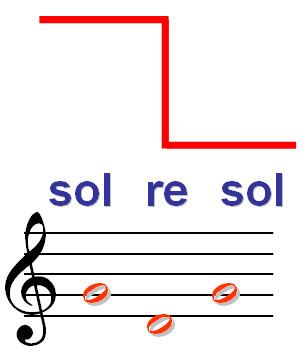Created by François Sudre Sources a priori Glottolog None | Date 1827 ISO 639-3 None (mis) | |
 | ||
Purpose constructed languagesmusical languageSolresol | ||
Solresol is a constructed language devised by François Sudre, beginning in 1827. His major book on it, Langue musicale universelle, was published after his death in 1866, though he had already been publicizing it for some years. Solresol enjoyed a brief spell of popularity, reaching its pinnacle with Boleslas Gajewski's 1902 posthumous publication of Grammaire du Solresol.
Contents
The teaching of sign languages to the deaf was discouraged between 1880 and 1991 in France, contributing to Solresol's descent into obscurity. After a few years of popularity, Solresol nearly vanished in the face of more successful languages, such as Volapük and Esperanto. There is still a small community of Solresol enthusiasts scattered across the world, better able to communicate with one another now than previously thanks to the Internet.
Phonology
Solresol words are made from one to five syllables or notes. Each of these may be one of only seven basic phonemes, which may in turn be accented or lengthened. There is another phoneme, silence, which is used to separate words: words cannot be run together as they are in English.
The phonemes can be represented in a number of different ways – as the seven musical notes in an octave, as spoken syllables (based on solfège, a way of identifying musical notes), with the seven colors of the rainbow, symbols, hand gestures etc. Thus, theoretically Solresol communication can be done through speaking, singing, flags of different color – even painting.
Symbols
Each "note" of Solresol is represented as a symbol, for example, "Do" is a Circle, "Re" is a vertical line, "Mi" and "La" are both half-circles, the former facing downwards, the latter facing right, Fa is a diagonal line from left-top to right-bottom, Sol is a horizontal line, and Si is a diagonal line from left-bottom to right-top.
Words of Solresol are formed by connecting the symbols in the order they appear in the word.
The Solresol Latin alphabet is the smallest alphabet, containing just 10 letters (a, d, e, f, i, l, m, o, r and s).
Vocabulary
In Solresol morphology, the longer words are divided into categories of meaning, based on their first syllable, or note. Words beginning with 'sol' have meanings related to arts and sciences, or, if they begin with 'solsol', sickness and medicine (e.g. solresol, "language"; solsolredo, "migraine"). Like other constructed languages with a priori vocabulary, Solresol faces considerable problems in categorizing the real world around it sensibly. The last couple of syllables may be arbitrary, to capture distinctions such as "apple" vs "pear" which do not fit simple categories.
Feminine words are formed by accenting the last syllable, and plurals by lengthening it.
A unique feature of Solresol is that meanings are negated by reversing the syllables in words. For instance fala means good or tasty, and lafa means bad. It is unclear how this interacts with the way words are categorized by their first note, and is not true in all instances, such as young man, bachelor and of not being opposites.
The following table shows the words of up to two syllables:
* Feminine versions are formed by stressing the last syllable.
Grammar
Apart from stress and length, solresol words are not inflected. Word order is also rather strict.
Solresol marks feminine gender and plural number, by stressing or lengthening the last syllable of a word:
resimire brother, resimiré sisterresimiree brothers, resimiréé sistersThis only affects the first word in a noun phrase. That is, it only affects a noun when the noun is alone, as above; any determiner ('the', 'my', etc.) will take the gender or number marking instead:
redo resimire my brother, redó resimire my sisterredoo resimire my brothers, redóó resimire my sistersParts of speech are derived from verbs by lengthening (or perhaps stressing; the description is not clear) one of the syllables: abstract noun (1st syllable), agent/doer (2nd syllable), adjective (penult), adverb (last syllable). For example,
midofa to prefer, miidofa preference, midoofa preferable, midofaa preferablyresolmila to continue, reesolmila continuation, resoolmila one who continues, resolmiila continual, resolmilaa continuallyQuestions are formed by inverted subject and verb.
The various tense-and-mood particles are the double syllables, as given in vocabulary above. In addition, passive verbs are formed with faremi between this particle and the verb. The subjunctive is formed with mire before the pronoun. The negative do only appears once in the clause, before the word it negates.
The word fasi before a noun or adjective is augmentative; after it is superlative. Sifa is the opposite (diminutive):
fala good, fasi fala very good, fala fasi excellent, the best; sifa fala okay, fala sifa not very good (and similarly with lafa bad)sisire wind, fasi sisire gale, sisire fasi cyclone; sifa sisire breeze, sisire sifa movement of airFurther attributes
Further developments
Another way of using Solresol is called ses, and was developed by George Boeree. The notes are given a representative consonant and vowel (or diphthong). The most basic words use the vowel alone; all others begin with a consonant followed by a vowel (or diphthong), etc.
In this way, one can write or pronounce words such as these:
Because the plural and feminine forms of words in Solresol are indicated by an stress or length of sounds, ses uses pau (some) or fai (many) to indicate the plural, and mu (well) to indicate the feminine when necessary.
